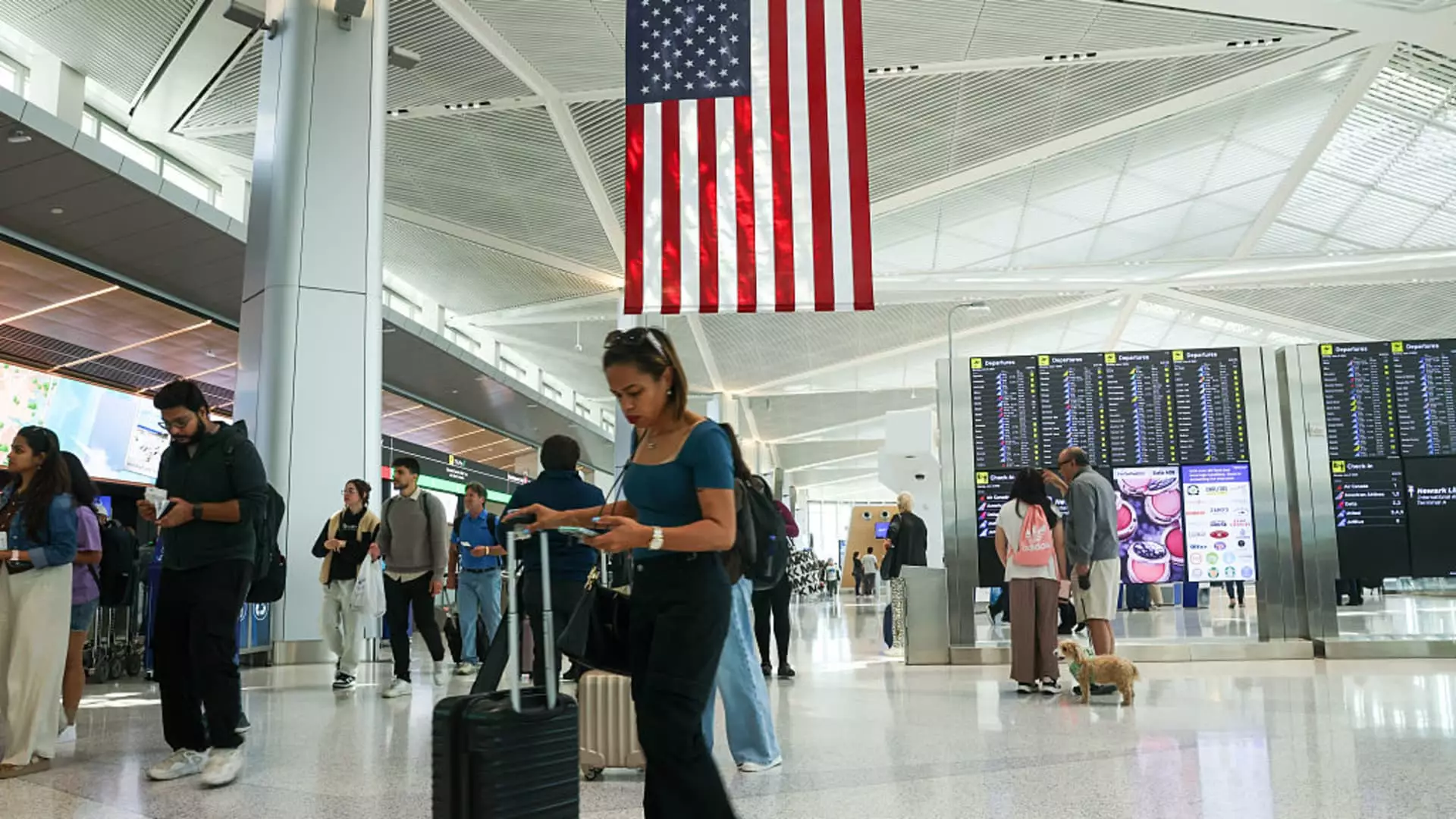The travel industry in 2024 is caught in a perplexing web of contradictions. On the surface, Americans are flying at historically low prices, with domestic fares hitting their cheapest levels since 2021. The narrative is that travel is cheap, accessible, and booming—yet beneath this veneer lies an undercurrent of economic fragility and strategic miscalculations that threaten the very foundation of the airline industry. While headlines tout lower fares and record passenger screenings, these numbers mask the troubling reality: demand remains tepid, carriers are bracing for turbulence, and the optimistic veneer of a post-pandemic boom is painfully thin.
Despite the apparent affordability of airfares, airline revenues tell a different story. Airlines like Southwest, Delta, and American are resorting to buffer strategies—cutting unprofitable routes and scheduling fewer flights during off-peak times. It is a clear acknowledgement that the traveler’s appetite for journeys—both domestic and international—has not recovered to pre-pandemic levels. Rather than riding a wave of renewed demand, the industry is riding a thin edge of caution, preparing for a long, uncertain economic storm that many analysts foresee on the horizon.
The Reality of Flatlined Travel Demand
One stark indicator of this disconnect is the sluggish return of international travelers. While international flights originating from the United States have inched upward—about 4.3% from last summer—the fares are easing significantly, eroding the premium margins airlines once enjoyed. European routes now cost nearly as much as they did before the pandemic, with large discounts to Asia. These discounts serve as a last-ditch attempt to stimulate demand but also signal a waning willingness among consumers to spend freely on travel.
The broader economic environment paints an even bleaker picture. Despite resilient jobs data and an otherwise strong labor market, consumer spending on travel is falling sharply—down nearly 12% in June, according to Bank of America. This decline hints at a deeper malaise; wages are not enough to sustain the previous levels of discretionary spending on travel, especially when inflation continues to nibble at household budgets. Airlines are acutely aware that relying solely on the promise of cheaper tickets is a fragile strategy; sustained demand must be back on solid footing to justify profit forecasts and long-term investments.
The Illusive Promise of a Resilient Industry
It’s tempting to see the current state as a temporary lull—merely the calm before a anticipated resurgence. Yet, the industry’s own forecasts paint a different picture. Major carriers have already pulled back on optimistic projections for 2025, citing uncertainties related to tariffs and geopolitical tensions. The recent decision by airlines to cut capacity and cancel unprofitable routes reveals a strategic shift from aggressive expansion to cautious pruning. This signals an endemic problem: airlines may have overexpanded during the pandemic’s tail end, assuming a demand surge that never materialized.
The biggest concern is the illusion of stability. TSA data show record numbers of travelers passing through security checkpoints, which suggests a pent-up desire for travel. Still, this surge risks being a mere blip rather than a sustained trend. Airlines are aware that they must hold their ground, as the timing and magnitude of potential future demand remain unpredictable. In this scenario, cheap fares are less an indicator of health and more a desperate attempt to keep some semblance of momentum.
The Political and Economic Echoes of a Fragile Industry
The economic policy environment also plays a role in shaping this fragile landscape. Tariffs, regulations, and international tensions continue to cast long shadows over international travel. Though the industry appears to be in a holding pattern, the risks associated with geopolitical instability could dramatically shift the landscape without warning.
This environment underscores the importance of a measured, center-right approach to economic and transportation policy. Overly optimistic forecasts and reckless expansion could further exacerbate the industry’s vulnerabilities. Policymakers and industry leaders must recognize that the current “summer sale” is a mirage—temporary relief that conceals deeper structural issues. Failing to address these could result in a crash for an industry that, despite its profitability in the short term, remains fundamentally unprepared for sustained turbulence.
While the headlines celebrate lower fares and record numbers through the gates, the truth remains that the industry stands at a crossroads—dividing between fleeting profits and long-term stability, with a global economic storm potentially on the horizon. For those with an honest, pragmatic outlook, the message is clear: the travel industry’s current health is superficial, and only responsible, strategic management will prevent it from plunging into crisis.

